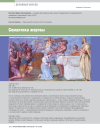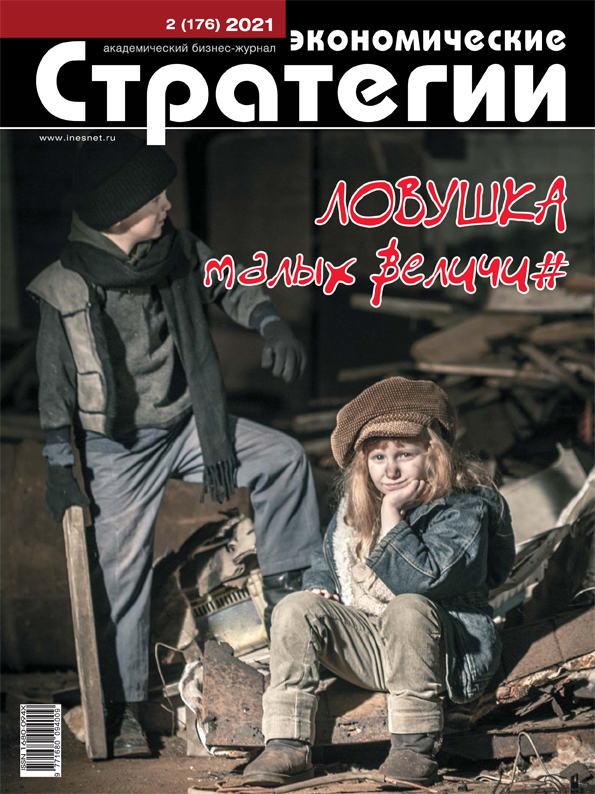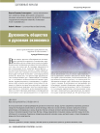Victim Semantics. Part II
DOI: 10.33917/es-4.190.2023.126-135
The paper focuses on understanding the place of the phenomena of a victim and sacrifice in the history of world culture and in sociocultural practices from its inception to the present state. The main socio-cultural pat terns of a victim and their links with other cultural universals — the game, myth, rites of passage, ethnic mentalit y are studied. The author analyses socio-cultural functions of the phenomena of a victim in the processes of changing technological structure in the Modern and Contemporary times and in the modern network societ y. It is concluded that the combination of sacrifice, game, myth and heroic principle is a universal regulating, synthesizing and promoting transitional factor. This factor in the anthroposphere triggers the process of emergence inside it of a special structure of self-maintenance and selfdevelopment, in other words, a socio-cultural matrix (invariant, homeoresis), the most impor tant element of stability in the conditions of any crisis and any transition.
References:
[1–5] see No. 2(188)/2023, p. 135.
6. Udalova G.P. Predposylki vozniknoveniya zhertvoprinosheniya kak formy sotsial’nogo povedeniya: Zhertvoprinosheniya v arkhaike: atributsiya, naznachenie, tsel’ [Prerequisites for the Emergence of Sacrifice as a Form of Social Behaviour // In the collection: Sacrifices in the Archaic: Attribution, Purpose, Designation]. Vyp. 5, Saint Petersburg, 2012.
7. Subetto A.I. V.R. Arsen’ev. Etnograf, filosof, futurology [V.R. Arseniev. Ethnographer, Philosopher, Futurologist]. Saint Petersburg, 2010.
8. Arsen’ev V.R. Zveri — bogi — lyudi [Beasts – Gods – People]. Moscow, Politizdat, 1991, 158 p.
9. Arsen’ev V.R. Svod osnovnykh ponyatii etnosofii [Code of Basic Concepts of Ethnosophy]. Moscow, Evropeiskii dom, 2006, 92 p.
10. Tailor E.B. Pervobytnaya kul’tura [Primitive Culture]. Moscow, 1989.
11. Moss M. Sotsial’naya funktsiya svyashchennogo [Social Function of the Sacred]. Saint Petersburg, 2000.
12. Moss M. Ocherk o dare. Forma i osnovanie obmena v arkhaicheskikh obshchestvakh [Essay on a Gift. Form and Basis of Exchange in Archaic Societies]. Moscow, 1996.
13. Malinovskii B. Magiya, nauka i religiya [Magic, Science and Religion]. Moscow, 1998.
14. Dmitrieva T.N. O neodnoznachnosti ponyatiya “zhertvoprinoshenie”: Zhertvoprinosheniya v arkhaike: atributsiya, naznachenie, tsel’ [On the Ambiguity of
the “Sacrifice” Concept: Sacrifices in the Archaic: Attribution, Purpose, Designation]. Vyp. 5. Saint Petersburg, 2012.
15. Tokarev S.A. Rannie formy religii [Early Forms of Religion]. Moscow, 1990.
16. Tokarev S.A. O zhertvoprinosheniyakh [About Sacrifices]. Etnograficheskoe obozrenie, 1999, no 5.
17. Butovskaya M.L. Agressiya i primirenie kak proyavlenie sotsial’nosti u primatov i cheloveka [Aggression and Reconciliation as a Manifestation of Sociality in Primates and Humans]. Moscow, 1998.
18. Kaiua R. Mif i chelovek: Chelovek i sakral’noe [Myth and Man: Man and the Sacred]. Moscow, 2003.









